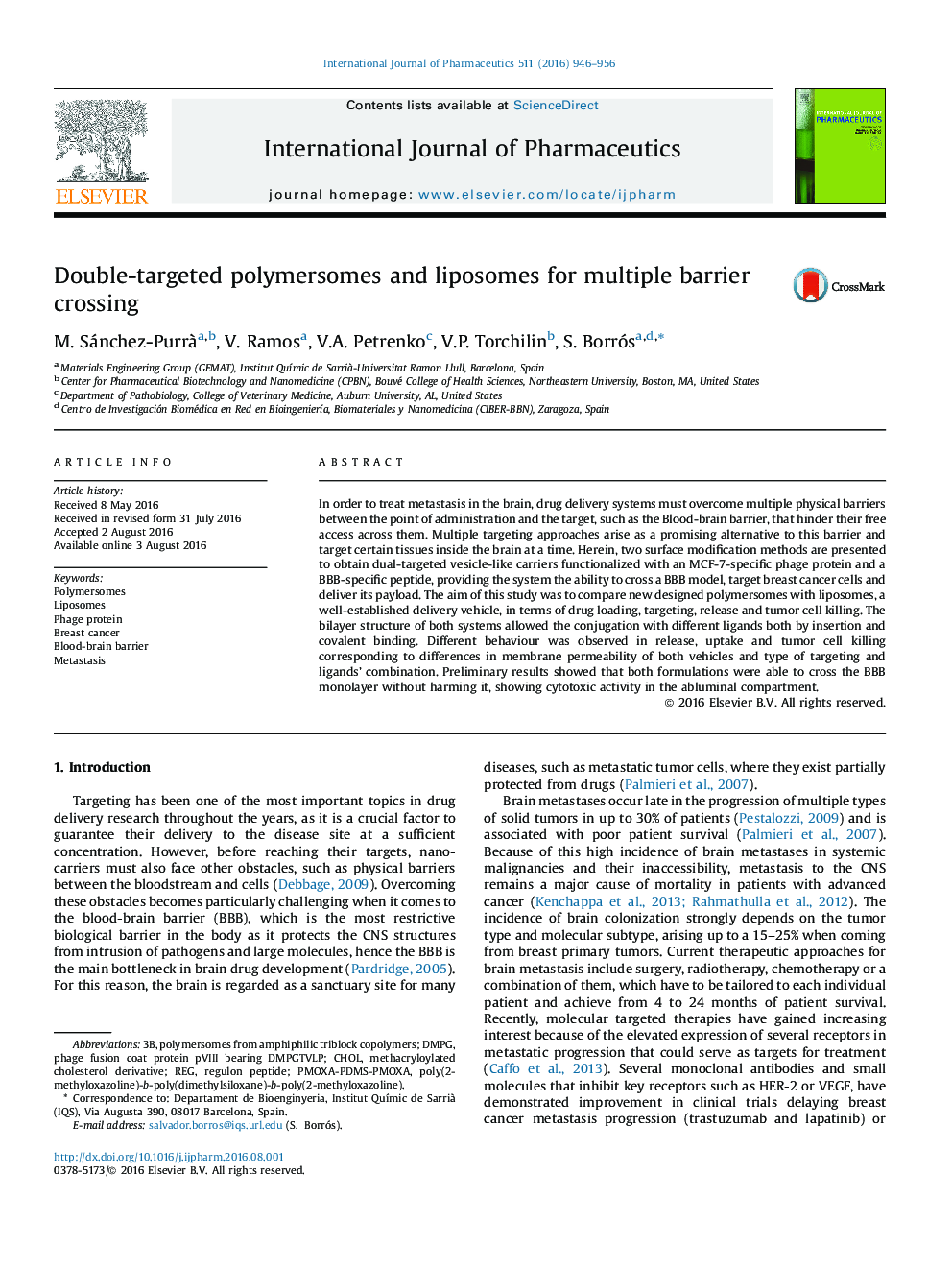| Article ID | Journal | Published Year | Pages | File Type |
|---|---|---|---|---|
| 5817271 | International Journal of Pharmaceutics | 2016 | 11 Pages |
In order to treat metastasis in the brain, drug delivery systems must overcome multiple physical barriers between the point of administration and the target, such as the Blood-brain barrier, that hinder their free access across them. Multiple targeting approaches arise as a promising alternative to this barrier and target certain tissues inside the brain at a time. Herein, two surface modification methods are presented to obtain dual-targeted vesicle-like carriers functionalized with an MCF-7-specific phage protein and a BBB-specific peptide, providing the system the ability to cross a BBB model, target breast cancer cells and deliver its payload. The aim of this study was to compare new designed polymersomes with liposomes, a well-established delivery vehicle, in terms of drug loading, targeting, release and tumor cell killing. The bilayer structure of both systems allowed the conjugation with different ligands both by insertion and covalent binding. Different behaviour was observed in release, uptake and tumor cell killing corresponding to differences in membrane permeability of both vehicles and type of targeting and ligands' combination. Preliminary results showed that both formulations were able to cross the BBB monolayer without harming it, showing cytotoxic activity in the abluminal compartment.
Graphical abstractDownload high-res image (239KB)Download full-size image
